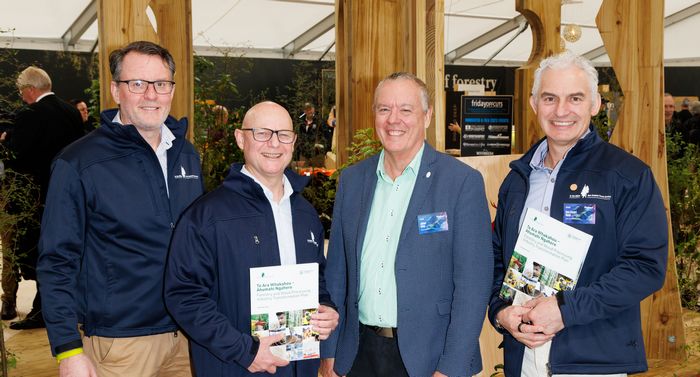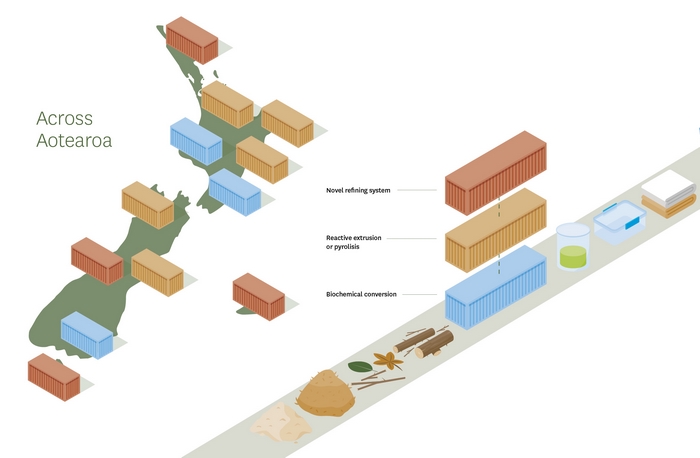New roadmap for forestry and wood processing sector

Minister for Forestry Hon. Stuart Nash unveiled the Forestry and Wood Processing Industry Transformation Plan (ITP) at the summer edition of Fieldays where 35 organisations, including Scion, educated visitors about the dynamic sector and technologies that can support communities to use trees and fibre in new and exciting ways.
Scion chief executive Dr Julian Elder says the ITP aligns with Scion’s expertise and gives impetus to the view that combining innovation and trees can accelerate growth in regional communities.
“It also reinforces the value of Scion’s Strategy to 2030: Right tree, right place, right purpose. Having this formula drive our work has relevance for regional New Zealand where we can apply our innovations and technologies to wood and fibre from trees and support primary industries in new ways.
“We commend Te Uru Rākau – New Zealand Forest Service for the plan, developed in association with many stakeholders. The ITP and our strategy both highlight how there are opportunities for landowners with trees to increase their returns by making the most of new technologies. It also provides a pathway for more high-paying jobs in the regions through the development of new manufacturing sectors.”
New Zealand exports about 60% of harvested wood as logs for other countries to process and add value. In contrast, the 15% exported as value-added wood products return over 40% of total export revenue. The ITP charts a course to turn that around.
Increasing New Zealand’s onshore wood processing capability and investment in transforming and developing our domestic woody biomass industry are two target areas identified in the ITP that will drive sector growth, create jobs, and reduce emissions across the economy.
For 75 years, Scion’s research has supported New Zealand through the evolution of forestry and timber industries. That research continues today, with new technology from Scion presenting even greater ways to make the most of trees, and to create new manufacturing sectors.
“Our bio-based research is challenging everyone to re-think how we make better use of every inch of the tree, and the waste generated from tree harvesting,” says Elder.
“It’s a future where woody biomass processed on site can be used to create high -value products, offering an alternative to products made from fossil fuels.”
With Scion’s focus on research that supports industry to improve productivity and to explore wood-based products for building, biotech and bioenergy, there are opportunities to use this knowledge to accelerate New Zealand’s transition to a more circular bioeconomy, says Elder.
“As well as helping New Zealand meet its net-zero climate change commitments by 2050, this new bioeconomy is a $30 billion opportunity.
“It’s this environment that provides a mosaic of activity for regional New Zealand to thrive, through emerging bio-based manufacturing and the creation of high-value products from inputs that we currently consider waste.”
Distributed Manufacturing
To deliver on this, Scion is leading the development of an approach called Distributed Manufacturing, which involves placing small processing units, or mini factories, on or near the sources of available biomass.
Distributed Manufacturing is one solution to increase on-shore manufacturing and can play a major role in the tree-based value chain. Essentially, these mini factories can be tailored to process biomass such as wood waste (slash), horticultural and farm shelterbelt thinnings or crop residues into high-value wood-based products, biochemicals or pharmaceuticals.
“Imagine a factory that fits in a shipping container – compact and mobile,” Elder says.
“These can be strategically positioned within a forest, next to a farm or orchard where the waste is created. These factories can perform novel scalable processes such as biochemical conversion, pyrolysis and pulping. The choice of process depends on inputs and the product being made. It’s about the right process for the right product in the right region.
“The work our scientists do every day is totally aligned with the ITP which has created a roadmap to support growth in regional New Zealand, deliver on Māori aspirations, and diversify domestic and export markets.
“This transformation will give us the power to not only reduce waste, pollution and greenhouse gas emissions but also to grow prosperity, jobs and community resilience.”

